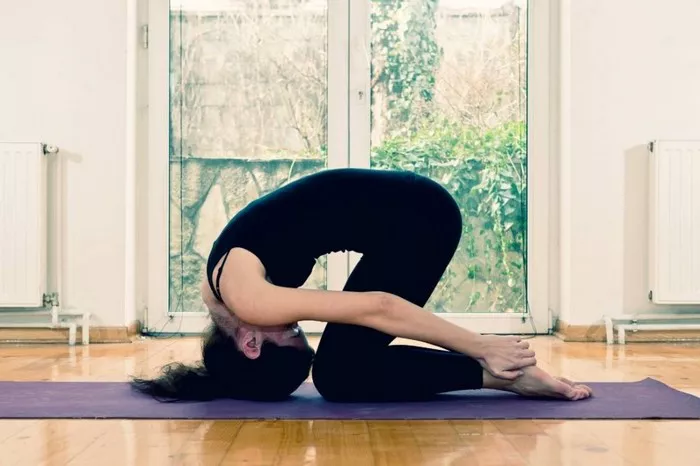Yoga blocks are essential tools for enhancing your practice, providing support and stability in various poses. Whether made from foam, cork, or wood, these blocks require regular cleaning to maintain hygiene and longevity. This comprehensive guide will take you through the steps to properly clean and care for your yoga blocks, ensuring they remain in top condition for years to come.
Understanding the Importance of Cleaning Yoga Blocks
Yoga blocks come into contact with sweat, oils from the skin, and sometimes dirt from the floor, making them susceptible to bacteria and mold. Regular cleaning is essential for several reasons:
- Hygiene: Clean blocks prevent the buildup of bacteria and fungi, reducing the risk of skin infections and other health issues.
- Longevity: Proper maintenance extends the life of your blocks, ensuring they remain functional and supportive.
- Performance: Clean blocks provide better grip and support, enhancing the overall yoga experience.
Materials and Preparation
Before you begin cleaning your yoga blocks, gather the necessary materials:
- Mild dish soap or gentle cleaning solution
- Warm water
- Soft cloths or sponges
- Spray bottle
- White vinegar (optional)
- Essential oils (optional)
- Drying rack or towel
Step-by-Step Cleaning Guide for Foam Yoga Blocks
Foam yoga blocks are lightweight and commonly used due to their soft texture and affordability. Here’s how to clean them effectively:
1. Daily Maintenance: After each practice, wipe down your foam blocks with a damp cloth to remove sweat and surface dirt. This simple step can prevent the accumulation of grime and bacteria.
2. Weekly Cleaning: Once a week, give your foam blocks a more thorough cleaning.
- Fill a basin with warm water and add a few drops of mild dish soap.
- Submerge the block in the soapy water and use a soft cloth or sponge to gently scrub all surfaces.
- Rinse the block with clean water to remove any soap residue.
- Pat the block dry with a towel and let it air dry completely before using it again.
3. Deep Cleaning (Monthly): For a deeper clean, especially if you notice any odors or stains:
- Create a solution of equal parts water and white vinegar in a spray bottle.
- Spray the solution onto the block and let it sit for a few minutes.
- Scrub the block with a cloth or sponge, then rinse with clean water.
- Dry the block thoroughly, ensuring no moisture remains inside.
Cleaning Cork Yoga Blocks
Cork yoga blocks are known for their durability and natural antimicrobial properties. However, they still require regular cleaning to maintain their texture and grip.
1. Daily Maintenance: Wipe your cork blocks with a damp cloth after each use to remove any surface dirt and sweat.
2. Weekly Cleaning:
- Mix a solution of warm water and a small amount of mild dish soap.
- Dip a soft cloth into the solution and wring it out so it’s damp, not soaking wet.
- Wipe down the entire block, paying attention to any dirty areas.
- Use a clean, damp cloth to wipe away any soap residue.
- Allow the block to air dry completely.
3. Deep Cleaning (Monthly):
- For a deeper clean, you can use a mixture of water and white vinegar or a specialized cork cleaner.
- Spray the solution onto the block and let it sit for a few minutes.
- Scrub the block gently with a soft cloth or sponge.
- Rinse with clean water and dry thoroughly.
See Also: 9 Basic Vinyasa Yoga Poses That You Can Practice
Cleaning Wooden Yoga Blocks
Wooden yoga blocks are sturdy and provide excellent support but need careful cleaning to avoid damage.
1. Daily Maintenance: Wipe your wooden blocks with a dry cloth after each use to remove any dust and sweat.
2. Weekly Cleaning:
- Mix a small amount of mild dish soap with warm water.
- Dip a cloth into the solution, wring it out, and gently wipe down the block.
- Avoid soaking the wood, as excess moisture can cause damage.
- Wipe the block with a clean, damp cloth to remove any soap residue.
- Dry immediately with a towel and let it air dry completely.
3. Deep Cleaning (Monthly):
- For a deeper clean, you can use a mixture of water and white vinegar.
- Dampen a cloth with the solution and wipe the block.
- Rinse with a clean, damp cloth and dry thoroughly.
- Consider applying a small amount of wood polish or conditioner to maintain the wood’s finish and prevent drying out.
Tips for Maintaining Yoga Blocks
- Avoid Harsh Chemicals: Always use mild cleaning solutions to avoid damaging the material of your yoga blocks.
- Regular Cleaning: Incorporate a routine cleaning schedule to maintain the hygiene and longevity of your blocks.
- Proper Storage: Store your yoga blocks in a cool, dry place to prevent moisture buildup and mold growth.
- Check for Damage: Regularly inspect your blocks for any signs of wear and tear. Replace them if they become damaged or lose their structural integrity.
DIY Cleaning Solutions
If you prefer natural cleaning solutions, here are a few DIY recipes:
Essential Oil Cleaner
- Mix 1 cup of water with a few drops of essential oils (such as tea tree or lavender) in a spray bottle.
- Shake well and spray onto the blocks.
- Wipe with a clean cloth and let it air dry.
Baking Soda Scrub
- Mix 1 tablespoon of baking soda with water to form a paste.
- Apply the paste to any stained areas and scrub gently with a cloth.
- Rinse with clean water and dry thoroughly.
Conclusion
Maintaining clean yoga blocks is crucial for hygiene, longevity, and performance. By following the steps outlined in this guide, you can ensure that your blocks remain in excellent condition, providing the support and stability you need for a fulfilling yoga practice. Regular cleaning, proper storage, and gentle handling will keep your yoga blocks looking and performing their best for years to come.
Related topics:























